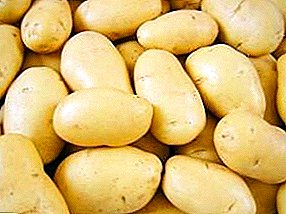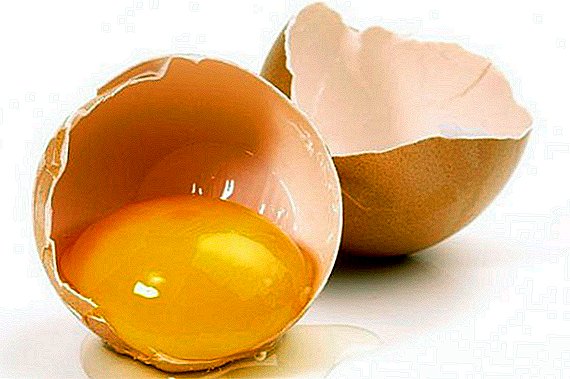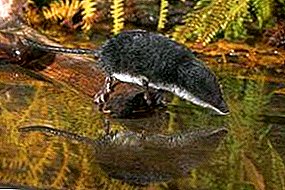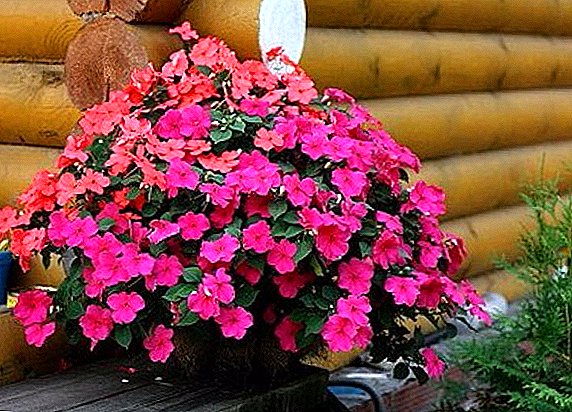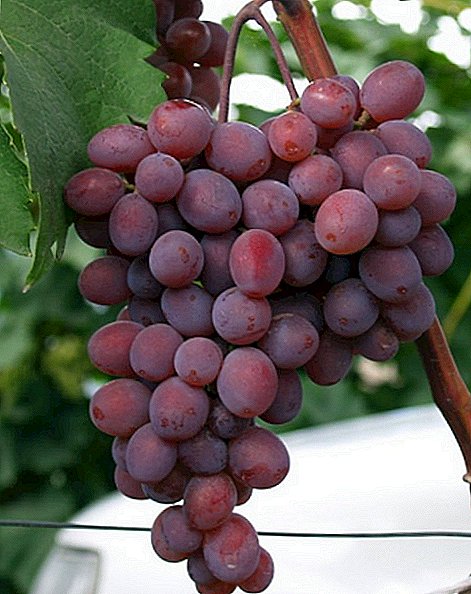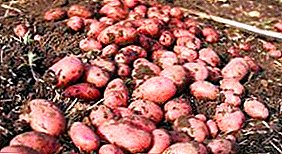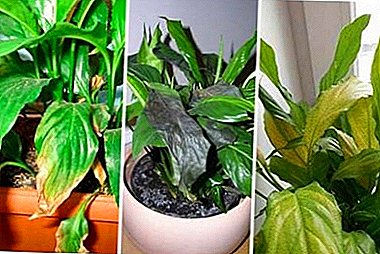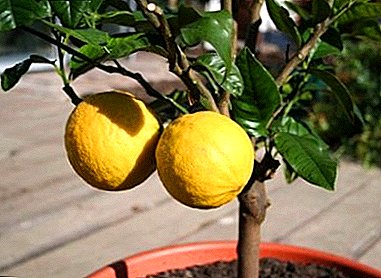
The dream of any gardener: to get a big crop of potatoes without chemical fertilizers, compost, manure.
It is also desirable in this case: neither dig, nor weed, nor spud, nor rush with a can, collecting the Colorado potato beetle or not poison it with chemistry, saving it from the invasion of beetles.
Fairy tale! But really. And you can even grow a bucket of clean, selected potatoes from one bush. About this and tell you further, namely: how to prepare the ground in the fall, what straw is needed. The disadvantages of the classic and what are the alternative ways of planting tubers.
How is this possible?
There is no traditional way of growing potatoes under straw, where the earth plays a secondary role. Caring for potatoes planted in the open field in such a way is easier. But even this method of agricultural engineering has its advantages and disadvantages.
Pros:
- There is no need to dig deep in the ground and shake out all the weeds.
- You can begin to grow potatoes, even in a desolated area, where nothing has been planted for a long time.
- Straw is an excellent mulch layer. Weeds cannot break through a thick layer of straw. So we will not have to weed.
- Spud is not necessary. You will only need to pour hay / straw.
- Potatoes grown in hay are rarely attacked by the Colorado potato beetle.
- The method is good for dry regions. Watering is required only if drought and high temperatures persist for a long time.
- Dig the crop is not necessary. It is necessary to move the layer and slightly pull the bush.
- Land pr such agricultural technology is not depleted. All the nutrients the potato gets from the decomposed hay. The soil is on the contrary enriched with nutrients.
- It is easy to collect 10 buckets from one bucket of planted potatoes.
Minuses:
 Straw is a magnet for mice and other rodents. If they breed under it, then most of the harvest can be lost. To scare off rodents in the area with potatoes, elder, black root, wormwood, mint, tansy, chamomile, wild rosemary are grown. You can also lay out the dried and crushed orange and lemon peels when planting potatoes. Their scent will scare off rodents.
Straw is a magnet for mice and other rodents. If they breed under it, then most of the harvest can be lost. To scare off rodents in the area with potatoes, elder, black root, wormwood, mint, tansy, chamomile, wild rosemary are grown. You can also lay out the dried and crushed orange and lemon peels when planting potatoes. Their scent will scare off rodents.- Potatoes grown under straw have a slightly different taste to get used to. Not everyone likes him.
- Straw is a hotbed for slugs. They feel at ease here. It is not advisable to plant cabbage near the potato plot.
- For growing crops need straw and hay in large quantities. If you can not independently harvest them, you will have to buy. And this is a financially costly undertaking.
Classic way
Work on the future harvest begins in the fall. So. proceed to the main stages:
Preparing the soil
Work begins in the fall. The scheme works in the case of a well-kept plot, and in the case of cultivation of "virgin". Shallow the shovel bayonet shallowly and turn the grass upside down. The green part of the grass touches the ground. In winter, it will perepret and serve as a fertilizer soil.
Recommended plant the land with green manure. They displace weed crops from the site and enrich the soil with phosphorus, nitrogen and other trace elements.
As the predecessors of the potato fit:
- mustard;
- oats;
- rye;
- alfalfa;
- phacelia
Material preparation
For growing potatoes, it is preferable to use not fresh straw, but last year’s, packed. Freshly cut grass will not work. It gives little nutrients to potatoes. Straw that has not rotted over the season can be reused. Only need to dry it well.
Planting potatoes
 In the spring before planting potatoes moisten the soil.
In the spring before planting potatoes moisten the soil.- Then it is laid out in rows, keeping a distance of 25-30 cm between the holes.
- The gap between the rows should be 70 cm.
- Around the potato can be scattered to choose from: chopped egg shells (disinfecting effect), wood ash (from wireworms, source of potassium), chopped orange and lemon peels (scares rodents).
- Then you need to cover the potatoes 25-30 cm. A layer of straw / hay.
- Between the holes the layer should be thinner.
From the video you will learn how to plant potatoes under the straw:
disadvantages
- A large amount of straw that you need to either buy or harvest.
- If you put a thin layer or it turns out that some of the holes will be under a thin layer of straw, the potatoes in them will turn green. Accordingly will be unsuitable for food.
- In the straw rodents can be got. In the hay - slugs.
Alternative method
This method assumes lower costs for straw. Immediately used the resources of the soil and straw.
- Potatoes are germinated in advance in order to achieve earlier maturation.
- Scheduled furrows.
- Shovel or hoe mark the wells with a depth of 6-7 cm.
- The distance between the holes is 30 cm.
- Next you need to put the potatoes in the wells and sprinkle with soil.
Then there are two options:
- Immediately sprinkle the wells with a layer of 25-30 cm of straw.
- After the potato rises and grows to a height of 5-10 cm, cover it with a layer of loose straw 15-20 cm thick (if desired, and if possible, you can pre-mulch with a loose humus layer 5-10 cm). Sprouts emerging from the ground quickly break through the straw. After re-possible from the side of the row between rows and more straw to protect the tubers from light.
How to grow with cardboard?
If it is possible to find or get cardboard from household appliances, then you can try another interesting method of potato cultivation.
Main components and tools for work:
 sprouted potatoes;
sprouted potatoes;- potatoes;
- knife;
- straw.
Step-by-step actions:
- Cardboard must be laid on the land, leaving no gaps (overlap).
- Fasten it or press down with something heavy around the edges.
- Next on the cardboard mark the X-shaped sections.
- The intervals between marks should be 30 cm.
- The next stage also has two cultivation options.
- 1 way without straw:
Under each cut in the cardboard it is necessary to make a hole about 15 cm deep. Put the potatoes in them. Sprinkle with earth. The mulch layer will be cardboard. Watering potatoes to carry out strictly in the wells. Cardboard does not allow germination of weeds and does not allow moisture to evaporate quickly.
- 2 way with straw:
Potatoes are laid in x-shaped holes directly on the ground. You need to put the potatoes in such a way that at least one potato sprout looks out. Then it is necessary to cover the sheets of cardboard with a layer of straw at 20 cm. As soon as the shoots break through the layer, the holes must be covered again with a 15 cm layer of straw (hay) on top.
If before planting potatoes there was no rain and is not expected in the near future, then you need to shed the soil in advance.
On a note. Harvest in pleasure can be the first and second way. To do this, remove the straw and cardboard, slightly pull the tops and collect clean, large potatoes.
- 1 way without straw:
What is better - hay or dry stalks of cereal?
- Hay is pure dry grass. In its composition it may contain weeds and their seeds. In a humid environment, they germinate. But hay during rotting can be an additional source of nutrient enrichment of the soil.
- Straw - dry stalks of cereals. Does not contain weeds. But there are almost no nutrients in it. When rotting does not work organic fertilizer.
- Hay better protects potatoes from sunlight. If there is no hay, then the straw should be laid in a thicker layer.
- Cardboard decomposes in one year. When choosing a method of growing potatoes under cardboard, the reserves of cardboard must be constantly replenished.
- Hay and straw rot over about 2 years.
- Straw and hay are light covering materials. It can be carried away with a strong wind. It will be necessary to replenish the loss.
- in boxes and boxes without bottom;
- without weeding and hilling;
- in bags;
- in a barrel;
- on dutch technology.
Many gardeners are wary of everything new and do not want to hear about any new methods of potato cultivation. Then you can note the very idea - to mulch the soil with straw. In dry areas and in hot summer - this will allow for a long time to retain moisture in the soil. Also, the earth will be more friable and enriched with nutrients.


 Straw is a magnet for mice and other rodents. If they breed under it, then most of the harvest can be lost. To scare off rodents in the area with potatoes, elder, black root, wormwood, mint, tansy, chamomile, wild rosemary are grown. You can also lay out the dried and crushed orange and lemon peels when planting potatoes. Their scent will scare off rodents.
Straw is a magnet for mice and other rodents. If they breed under it, then most of the harvest can be lost. To scare off rodents in the area with potatoes, elder, black root, wormwood, mint, tansy, chamomile, wild rosemary are grown. You can also lay out the dried and crushed orange and lemon peels when planting potatoes. Their scent will scare off rodents. In the spring before planting potatoes moisten the soil.
In the spring before planting potatoes moisten the soil. sprouted potatoes;
sprouted potatoes;